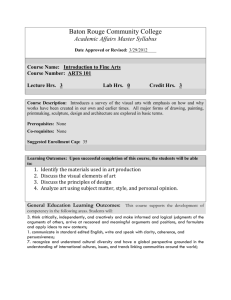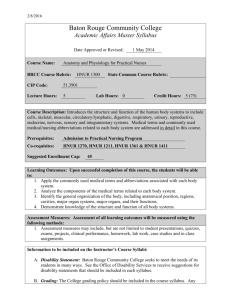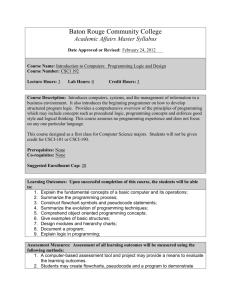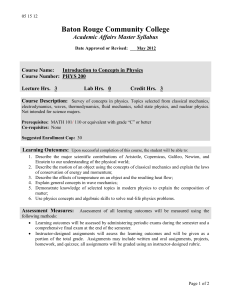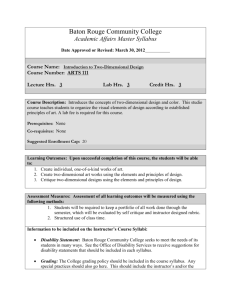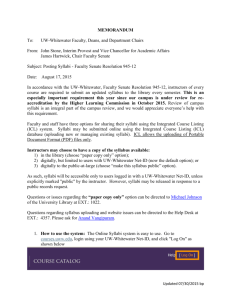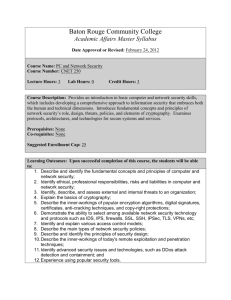shall ensure Class/Section syllabi are consistent with
advertisement
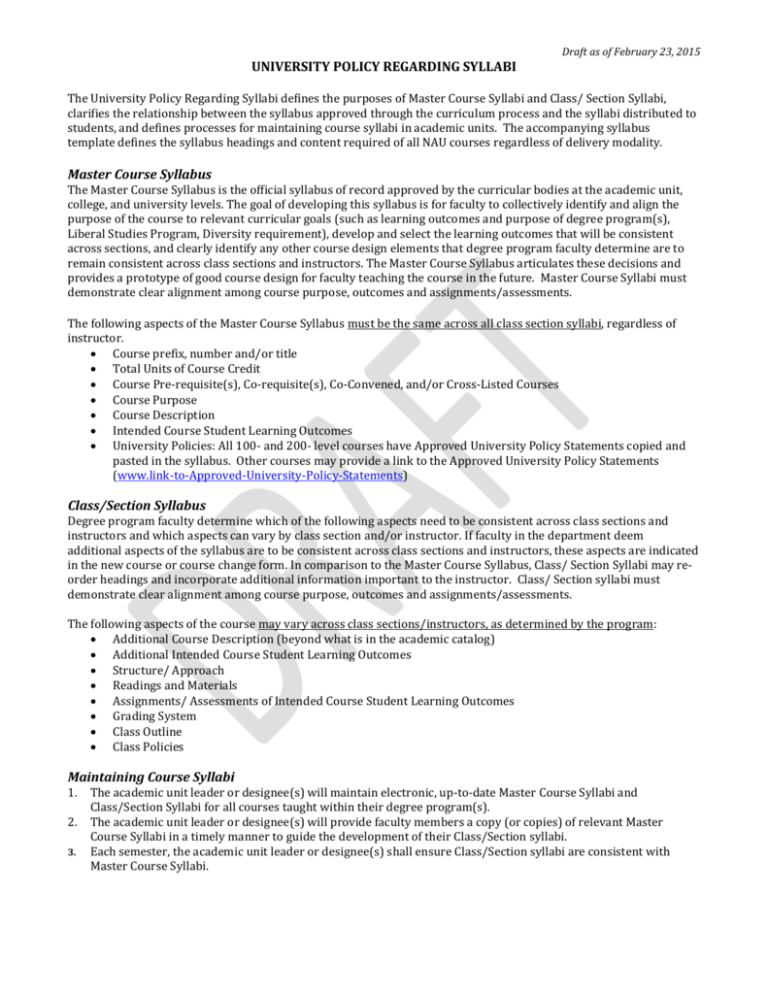
Draft as of February 23, 2015 UNIVERSITY POLICY REGARDING SYLLABI The University Policy Regarding Syllabi defines the purposes of Master Course Syllabi and Class/ Section Syllabi, clarifies the relationship between the syllabus approved through the curriculum process and the syllabi distributed to students, and defines processes for maintaining course syllabi in academic units. The accompanying syllabus template defines the syllabus headings and content required of all NAU courses regardless of delivery modality. Master Course Syllabus The Master Course Syllabus is the official syllabus of record approved by the curricular bodies at the academic unit, college, and university levels. The goal of developing this syllabus is for faculty to collectively identify and align the purpose of the course to relevant curricular goals (such as learning outcomes and purpose of degree program(s), Liberal Studies Program, Diversity requirement), develop and select the learning outcomes that will be consistent across sections, and clearly identify any other course design elements that degree program faculty determine are to remain consistent across class sections and instructors. The Master Course Syllabus articulates these decisions and provides a prototype of good course design for faculty teaching the course in the future. Master Course Syllabi must demonstrate clear alignment among course purpose, outcomes and assignments/assessments. The following aspects of the Master Course Syllabus must be the same across all class section syllabi, regardless of instructor. Course prefix, number and/or title Total Units of Course Credit Course Pre-requisite(s), Co-requisite(s), Co-Convened, and/or Cross-Listed Courses Course Purpose Course Description Intended Course Student Learning Outcomes University Policies: All 100- and 200- level courses have Approved University Policy Statements copied and pasted in the syllabus. Other courses may provide a link to the Approved University Policy Statements (www.link-to-Approved-University-Policy-Statements) Class/Section Syllabus Degree program faculty determine which of the following aspects need to be consistent across class sections and instructors and which aspects can vary by class section and/or instructor. If faculty in the department deem additional aspects of the syllabus are to be consistent across class sections and instructors, these aspects are indicated in the new course or course change form. In comparison to the Master Course Syllabus, Class/ Section Syllabi may reorder headings and incorporate additional information important to the instructor. Class/ Section syllabi must demonstrate clear alignment among course purpose, outcomes and assignments/assessments. The following aspects of the course may vary across class sections/instructors, as determined by the program: Additional Course Description (beyond what is in the academic catalog) Additional Intended Course Student Learning Outcomes Structure/ Approach Readings and Materials Assignments/ Assessments of Intended Course Student Learning Outcomes Grading System Class Outline Class Policies Maintaining Course Syllabi 1. 2. 3. The academic unit leader or designee(s) will maintain electronic, up-to-date Master Course Syllabi and Class/Section Syllabi for all courses taught within their degree program(s). The academic unit leader or designee(s) will provide faculty members a copy (or copies) of relevant Master Course Syllabi in a timely manner to guide the development of their Class/Section syllabi. Each semester, the academic unit leader or designee(s) shall ensure Class/Section syllabi are consistent with Master Course Syllabi. Draft as of February 23, 2015 Syllabus Template *College Logo *Department/ Academic Unit *Course prefix, Section number and Title Term/ Year *Total Units of Course Credit: As printed in the academic catalog *Course Pre-requisite(s), Co-requisite(s), Co-convened, and/or Cross-Listed Courses: Identifies the course pre-requisite(s)/ co-requisite(s) and describes the purpose of course pre-requisite(s)/ co-requisite(s), co-convened, and cross-listed courses Instructor’s Name Instructor’s Contact Information: Office Phone; E-mail, etc. Instructor’s Availability: Office address, Office hours, online availability, times the instructor is typically online or may be reached by phone, etc. *Academic Catalog Description: Only the Academic Catalog Description must remain consistent across class sections, unless otherwise noted by the department. Additional descriptions tailored by the instructor may be added. *Course Purpose: Identifies the overall goals or aims of the course, including: What is studied in the course (overview of content, skills, breadth/depth, etc.). clarifies how the course “fits into” or contributes to relevant curricular goals. For example: o How it fulfills degree program(s) requirements, such as: Why it is required, an elective, or a recommended course in the degree program(s) What it’s contributions are to the degree program’s student learning outcomes o For undergraduate degree programs, how it fulfills University-wide requirements, such as: Liberal Studies: defines how it achieves the purpose of the Distribution Block and identifies Essential Skills covered in the course Diversity requirement: defines how it achieves the purpose of the U.S. Ethnic or Global Diversity requirement. *Intended Course Student Learning Outcomes: Defines the scope (breadth and depth) of what students will “know and be able to do” upon completion of the course Are explicit and learning-centered (focus on what students learn rather than on what faculty teach) Align with the course purpose(s) and course design Are appropriate to the level of the course (e.g., 300-level courses would be more rigorous and comprehensive than 100-level courses, etc.). Assignments/ Assessments of Intended Course Student Learning Outcomes: Articulates key assignments/ assessments that will be used to provide clear indications of student achievement of course learning outcomes, and provides a summary of the purpose and description of the assignments/ assessments. Grading System: Points allocated to each assignment/ assessment, overall points for the course, and points necessary to achieve each letter grade. Structure/ Approach: Clear alignment among course purpose, outcomes, assignments/assessments. Readings and Materials: Lists the books, readings, articles, and materials required for the course. Class Outline: Expectations regarding the class schedule (when assignments, readings, materials, etc., need to be completed) are communicated to students, recognizing that schedules may change over the semester. Class Policies: Identifies and describes class policies, such as, makeup tests, attendance, etc. *University Policies: Approved University Policy Statements copied and pasted in the syllabus and/or via URL, pending course level. * indicates aspects that must remain the same as the Master Course Syllabus.
